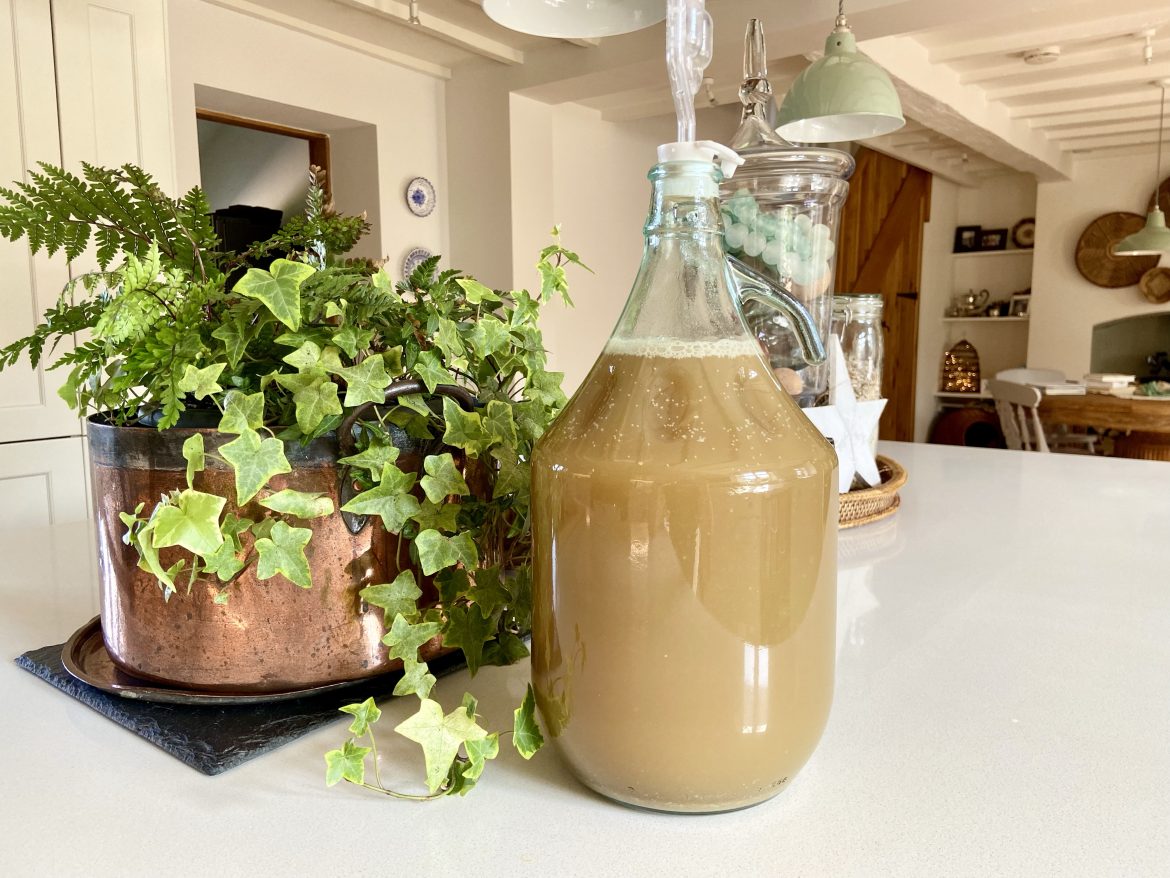I always thought I’d enjoy home-brewing beer and I’m enjoying the process more and more after every batch. It’s the Czech-style we produced in June that has really triggered a bit of an experimental brewing bug in me. Now that I have a solid beer making ‘base’ down, it’s a bit like learning how to make a good tomato sauce, which you can then evolve with different tastes such like adding chilli, oregano and olives to make an Italian dish or adding Indian spices to make a curry. So what do you do when life give you pumpkins? Soup, curries, ravioli and… beer. That’s right, today I made pumpkin ale, and I can’t wait to see how it turns out.
To get things going, I made my usual beer base, but went experimental to make an autumnal pumpkin ale. My batch size is 5-litres, and I went with the usual 1kg of malt (in six litres of water) but added 1kg of pumpkin (that I picked from our veg garden – see above) which I caramelised in the oven for around two hours at 110C (fan) with a bit of brown sugar sprinkled on top of it. By the time it was finished, I had gloriously sweet, well cooked pieces of pumpkin.
The pumpkin went into the mash after I stirred in my malt, and everything mashed at 65C for an hour and then mashed out at 75C for 20 minutes. Amazingly, when I emptied out the malt and pumpkin from the mashing bag, the pumpkin had largely disintegrated.






I followed the same process for boiling our wort for 60 minutes with the hops, with the slight difference that in the 15 minute end-boil I grated in half a nutmeg along with the bittering hops. In my head, nutmeg works, bit we’ll find out if works from a taste perspective in a beer.
The other difference to my lager recipe is that instead of using lager yeast, I opted for an ale yeast, because I thought this beer would benefit from a slightly ‘heavier’ yeast. I added 5g to the demijohn once I’d cooled our wort down to 19C.
I also tasted the wort before pouring it into the demijohn, and it was hopsy. I could not taste the pumpkin or the nutmeg, but one thing I’ve learned in my very brief brewing time is that you need give these brews time to settle. The other thing I noticed was the colour – this has a lovely, rich dark brown colour which I assume has come from the caramilised pumpkin.
I’ll now let this brew do this its thing in the demijohn for a fortnight (or until we see that CO2 activity in the airlock has subsided). It’ll then be bottled and left for at least another 3-4 weeks. It’s a long process, but it’s hugely rewarding (as with most things) when you get around to tasting your creation.
Watch it bubble:
